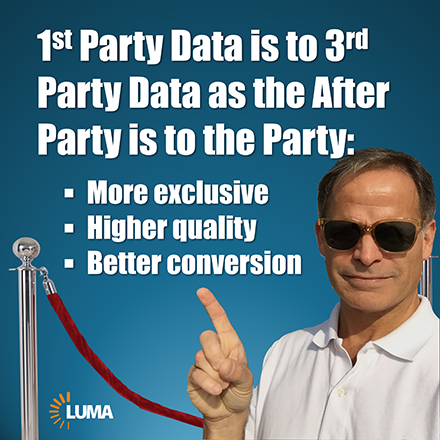 |
||||||||||||
|
||||||||||||
| Google’s Privacy Sandbox: Mitigating Publisher Revenue Losses in a Cookieless World? |
 |
| Google shook the ad tech industry when it announced it would potentially forgo deprecating third-party cookies in favor of an opt-out mechanism for consumers. Of course, many consumers may still opt out of using third-party cookies on Chrome, and therefore, finding privacy-complaint advertising solutions is still paramount. There's more than just the Privacy Sandbox to work with, but it will still be an option. Google is not throwing it away just because they aren't fully deprecating cookies on Chrome. In Q1 2024, Google conducted an experiment to assess the performance of Privacy Sandbox APIs and first-party signals, such as publisher first-party data and identifiers, compared to traditional third-party cookies. The results provide essential insights into how these changes might affect publisher monetization. The experiment revealed significant revenue impacts when they removed third-party cookies without using Privacy Sandbox APIs. Publishers experienced a 34% drop in revenue for Google Ad Manager and a 21% drop for Google AdSense. However, implementing Privacy Sandbox APIs alongside first-party data significantly reduced these losses, mitigating the revenue drops to 20% for Google Ad Manager and 18% for Google AdSense. This demonstrated that Privacy Sandbox APIs could help cushion the financial impact of losing third-party cookies. Moreover, using Privacy Sandbox APIs provided an incremental revenue uplift: 13% for Google Ad Manager and 3% for Google AdSense compared to the scenario without these APIs. Other industry tests were less favorable to the Privacy Sandbox. Criteo's Chief Product Officer, Todd Parsons, referred to it as a leaky lifeboat. If Chrome deprecated cookies today, even with the help of Privacy Sandbox, publishers would be waving goodbye to 60% of their revenue, according to a Criteo study. Of course, the plan to entirely deprecate cookies is on the back burner, but finding privacy-centric solutions is still necessary. As Patrick McCann, SVP of Research, Raptive, and PubForum Boston speaker said, “We won’t back off our ongoing investment in audience addressability using Sandbox technology so advertisers can reach all consumers, and our publishers will enjoy our industry’s best monetization however the consumer or their browser chooses to consume advertising.”– AB |
|
| The New York Times Unleashes BrandMatch: Cracking the Code of Gen AI Ad Campaigns |
| Everyone in digital media, advertising, and the ad tech community are all hopping on the AI craze right now. Whether it's the trend or everyone is looking to increase workflow efficiency, AI is increasingly becoming a part of daily professional life. In ad tech, the question remains: how do you create cost-effective and robust campaign targeting with AI? Maybe the New York Times found the answer. According to Valerio Poce, Executive Director of Ad Product Marketing at The New York Times, who recently told us at the AdMonsters Ops Conference, GenAI can significantly improve ad targeting by understanding brand messages and audience behaviors, leading to more accurate ad placements and better campaign results. He encourages publishers to, "explore AI-driven platforms that offer semantic insights into content and audience behavior. Consider tools for creative generation, media planning, and inventory tagging. Start with pilot projects to assess their effectiveness in personalizing ads without first-party data and enhancing content and audience targeting." Over the past three months, The New York Times leveraged generative AI to enhance brand campaigns by matching them with the most relevant articles and audiences, yielding promising results. Their new AI-powered tool, BrandMatch, utilizes large language models to analyze advertiser briefs, identify specific audience segments, and align them with appropriate content. While the Times has not disclosed the specifics of their audience definition, they reported that campaigns using BrandMatch have significantly outperformed their average benchmarks, achieving a click-through rate of 0.40% and a brand lift increase of 8.4%. In recent tests with six brands, including Paramount+ and Ferragamo, BrandMatch demonstrated its effectiveness across various sectors such as tech, finance, and luxury. For example, Paramount+ used BrandMatch to target two distinct audiences for the final season of "Evil," resulting in a CTR over 20% higher than similar entertainment ads. And it’s not just The New York Times diving into AI-driven ad optimization. Hearst Magazines, for instance, launched their own AI-powered ad tech tool, Aura, which promises to improve click-through rates by leveraging first-party data and sophisticated AI models, even in a post-cookie world. As for The Times, BrandMatch's advanced targeting capabilities go beyond traditional methods by suggesting content that resonates with specific and nuanced audience interests. The news publisher plans to make the tool available to more clients in the fourth quarter of this year, expanding its suite of ad solutions. – AB |
| NBA Faces a Lawsuit After $76 Billion Streaming Deal |
NBA owners approved a colossal $76 billion TV deal with Disney, Comcast, and Amazon, marking a seismic shift in sports broadcasting, signaling the league’s full embrace of streaming. Effective from the 2025-26 season and significantly altering how the league will broadcast through the 2030s, this new agreement ends the NBA’s long-standing relationship with Warner Bros., sparking a contentious dispute. Warner Bros. has sued the NBA after the league rejected its matching offer for a media rights package in favor of Amazon Prime Video's bid. They filed the lawsuit in New York state court, seeking a judgment that it matched Amazon's offer and an order to delay the new media rights deal set to start in the 2025-26 season. The new deals would shift the WB’s TNT package to Comcast and Amazon while Disney retains the NBA Finals. Commissioner Adam Silver, however, hinted that negotiations with Warner Bros. are ongoing, with legal action possible if an agreement isn't reached. Streaming is becoming the new frontier for sports, with 53% of adults streaming sports monthly, representing 30% of all streaming views in the US. This shift is driving major changes in how sports content is consumed and monetized. The NBA's move to streaming platforms like Prime Video, Peacock, and ESPN's new service reflects the growing dominance of connected TV (CTV) over traditional linear TV. Meanwhile, local TV stations are scrambling to adapt. With traditional sports broadcasts migrating to streaming, local stations are losing significant ad revenue. Advertisers now face the challenge of a fragmented audience across multiple platforms, necessitating new digital strategies to engage sports fans. Regional Sports Networks (RSNs), like Bally Sports, are particularly impacted, with some filing for bankruptcy. In response, local stations are forging new partnerships directly with sports teams for broadcasts and streaming. Examples include KTLA's deal with the LA Clippers and the Vegas Golden Knights' partnership with Scripps stations. These partnerships aim to keep local TV relevant by reaching younger, more diverse audiences through over-the-air and streaming broadcasts. With an overwhelming audience in streaming, it makes sense for the NBA to invest in it. With this new audience comes a host of new data and ad revenue. While this transition presents challenges for local TV, it also opens new avenues for targeted advertising and audience engagement. – AB |
| SSP Fee Shake-up: A New Chapter in Publisher Partnerships? |
| The SSP game is getting a serious makeover. Ad tech giants PubMatic and Magnite are stirring the pot with new fee structures designed to give publishers direct access to buyers, bypassing the usual algorithmic maze. Magnite's latest move? A 4% fee bump for auction packages and curator deals, with SPO programs potentially hiking up to 10% more. Meanwhile, PubMatic's Access Membership, a subscription service launched in late 2022, charges a flat monthly fee for VIP treatment with premium buyer access and co-selling perks. Now, you might be thinking, "Another ad tech tax?" But hold up — there's more to this story. Some publishers are seeing these fees as a ticket to a more competitive auction landscape. In a market where SSPs have become increasingly commoditized, some are jazzing things up with more transparent and differentiated offerings. Deal Curation as a Service (DCaaS) and SaaS models are redefining and elevating how SSPs deliver value to publishers. As AdMonsters previously discussed with Scott Messer of Messer Media, DCaaS bundles primo inventory with high-value services, securing those premium CPMs without muddying the sales waters. On the other hand, the move towards a SaaS model represents a transition from traditional rev-share to a more transparent, service-based approach. SSPs can provide clearer value and performance metrics by charging a straightforward service fee and encouraging long-term, strategic partnerships. Samuel Youn from Chegg argues that this could lead to more meaningful, high-quality SSP relationships. Are these new fees just an additional cost for pubs, or do they bring real value? The jury's out, but with strategic partnerships and added-value services, SSPs could turn these fees into serious revenue boosts. However, publishers are right to approach this with a mix of interest and – LdJ |
| @{optoutfooterhtml}@ |












